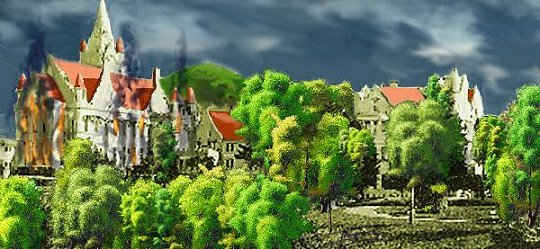![]()
Coasts
Rivers/Lakes
Lowlands/Plains
Geysers/Mud
Glaciers
Mt. Ruapehu
Mt. Cook
White Island
A Maori Legend
![]()
Abbotsford
Aramoana
Ballantynes
Brynderwyns
Cave Creek
Hawkes Bay
H.M.S. Orpheus
Influenza
Mt. Erebus
Mt. Tarawera
Rainbow Warrior
Seacliff Hospital
Tangiwai
Wahine
![]()
Annie Aves
Ata-hoe
Daisy Basham
Jean Batten
Minnie Dean
Mabel Howard
Margaret Mahy
Kath Mansfield
Kate Sheppard
Kiri Te Kanawa
Catherine Tizard
Murray Ball
Charles Goldie
Edmund Hillary
Richard Pearse
Lord Rutherford
Charles Upham
![]()
NZ FAQ--Funny
NZ Links
Credits
December 8th, 1942 Twenty miles north of Dunedin stood Seacliff Mental Hospital. About 10 p.m. an emergency bell clanged loudly throughout the night air. It was used for only one reason -- to summon attendants that lived off the property up to the hospital in the event of an emergency. Shortly prior to this a night nurse for the women's wards had smelt burning and sent another nurse to investigate. She then continued her rounds but upon entering another ward she looked and saw Ward No. 5 was on fire. Alarms were set off throughout the buildings. The hospital's own fire engine went into action and an evacuation of patients from the northern end of the building was started. Flames were shooting out of the burning wing and the heat and flames meant little could be done for those trapped in the southern end. By the time the fire engine arrived flames were already through the roof and part of the front was falling in. The anguish of the thirty-nine trapped patients can only be imagined. All were women of various ages and in differing mental states, but mostly serious cases. There was no hope of escape through windows as all bedroom windows were covered by wooden shutters. Other windows had wire gratings over them and the doors were locked. The grating was pulled from one window where there were no flames and a woman rescued with her nightie and bed jacket on fire. There were three exits on the ground floor and several fire escapes on the upper storey but only one woman was able to get out onto a fire escape. She too was saved. Thirty-seven other patients were to die. On the ground floor was the dining room and nine single bedrooms. The upper floor contained a dormitory with twenty-one beds plus nine more single rooms. Because of the need to lock doors and windows a hospital of that type is inclined to be a ready-made death trap and that was the case in this situation. Add to that the fact that the 85 foot long, 35 foot wide building was very old, wooden, there was a gale force wind to fan the flames, and you have a recipe for disaster. In a little under an hour most of the two-storey building had disappeared. Firemen concentrated on saving the other building near by, from which everyone had been safely evacuated. Daylight revealed that less than fifty feet of the dormitory remained standing. The rest was a mass of debris, twisted iron bedsteads, burnt wood and roofing iron. No cause for the fire was ever found though there were several suggestions. The Seacliff area had suffered much earth movement for over thirty-six years and there was the thought that wires had crossed in the electric lighting installation. Ward No. 5 was in the worst area for slipping. Two years earlier the ground upon which the building stood had slipped so much that the north end had to be jacked up two feet and secured with bolts. Several other female wards had been removed because of slipping making them too dangerous to use. Starting in 1936 female Ward No. 1 was removed and this was quickly followed by Wards 2 and 3.
A fire had also occurred in 1938 during which the dining room was totally destroyed. Again no reason for this was found. Yet a third fire was attributed to the spontaneous combustion of coal stored in the building. Another suggestion as to the cause of this fire was the action of rats but there is nothing to support this theory. The possibility remains that a patient somehow started the inferno, again there is no evidence of this. To this day the cause remains unknown. A Commission of Inquiry recommended that where patients were locked behind doors and window shutters each room should have an emergency exit able to be opened from the outside. Modern rescue gear should also be available plus automatic sprinkler systems fitted into any similar institutions. This was the second Commission of Enquiry set up to look into Seacliff Mental Hospital. The first investigated the building and design of the hospital and was set up not long after the original 78,000 pound contract for the building was completed. The setting for the building was considered ideal and it certainly looked magnificent with its 50-metre tower but the dayrooms received little sun, bedroom windows were too high for patients to enjoy the glorious view, and for the 1,273 doors there were far too many keys of differing shapes, and sizes. Safety was severely compromised due to foundations which were inadequate for the unstable ground upon which the building was built. The commission heavily criticised both the architect and builder, but despite concerns for the safety of residents -- and this fire -- Seacliff remained in use for nearly a century, after which time patients were moved to Cherry Farm. Seacliff Mental Hospital was not a nice place for patients and some invasive medical procedures were sometimes carried out. There is one recorded incident of the complete desexing of a young woman inclined towards frequent masturbation. 'Unsexing' involved the removal of the clitoris, ovaries and fallopian tubes. This operation was seen as being 'good' by doctors since "there could never be any normal outlet for sexuality nor abandonment of the abnormal one." Her masturbation was seen as the root of the patient's problem. She was anaesthetised with ether and three doctors carried out the operation after which "no abnormality was noted in the sexual organs." To prevent the removal of the dressings her nightdress was sewn up between her thighs. A month after the operation no change had been noted in the woman's mental state. After several more weeks the only problem observed was an occasional tendency to "expose herself". Four months after the operation it was recorded that she was behaving "quite sensibly". The patient was released five months after her operation and the procedure declared a success. The doctors involved went on to relate events to medical colleagues and this cure for 'Masturbational Mania' was recorded in a medical journal. There are no records to show how the young woman fared in later life, 'unsexed' and unable to give birth.
|


